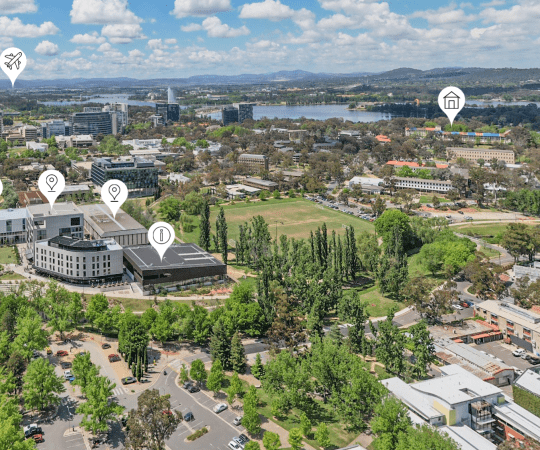
It’s a funny question but it seems to rear it’s ugly head quite frequently. Both client and designer probably ask it many times throughout a project.
A typical situation is when a client engages a designer to work on a project. A brief is provided with the added incentive “we’re looking for something different…”, or “we’re happy to be led by you on creative direction”.
It’s a nice feeling to have a (supposedly) blank canvas and a client that, from the word ‘go’, is putting their trust in the designer’s creative expertise.
Designers see things differently, that’s a fact. It’s a skill that’s being constantly honed, improved and refined. It’s also a fundamental reason why clients engage designers – to produce work that’s unique.
In practise, it sounds great. In reality, it rarely works that way.
Many designers talk about client feedback taking various forms – some is based on pure emotion (“I don’t like those colours…), some is obstinate (“In my view and in my experience…”) and some just seems completely irreverent (“I’m the client paying the bill…”).
It’s common for amends to be requested by individuals who are clearly uniformed but still feel they have a right to comment (and expect these changes to be actioned immediately without question). Feedback from committees also presents many challenges (see article: Approval politics).
It’s extremely unlikely a project will run from start to finish without a client requesting a change. Most of the time it’s expected and accepted by a designer. But the overarching gripe seems to be that few alterations seem to be based on valid reasons (which is a completely acceptable basis for change).
Why is this? Does this only happen in the creative world?
Would you question mechanic’s findings when your car is being serviced? What about a doctor’s medical assessment and offer an alternative theory based on something read on the internet? You’d be taking your life in your own hands so maybe not!
Would you dare suggest a few improvements a head chef could make to their menu? Probably not! But you’d question a designer without hesitation right?
Consider this, if you (a client) engaged a designer to undertake some design work, what would you say if the designer began to question your job, your reasoning or your results?
Would you be surprised? Would you see it as unprofessional?
Has the answer anything to do with design software being readily available? Anyone can buy it, have a go and become a self-professed ‘expert’. But then again, anyone can buy a camera and take a picture but you know it will never be quite the same as those stunning National Geographic shots or a family portrait by Venture Photography.
Similarly, giving the same ingredients and instructions to create the same meal to a cooking enthusiast and a chef would certainly produce very different results.
This suggests then that it’s not really what you’ve got, it’s how you use it? And that’s where talent and expertise comes into play.
It seems to be a curse though when the designer’s unique skill-set is initially sort after by a client but the end result is a watered-down idea.
Could the reason for this ongoing designer/client battle be something to do with working in a (sometimes) abstract environment? Asking a builder to add another room to a house (during the build) is maybe easier for a client to grasp the subsequent ramifications of this request. It’s a more tangible scenario.
It is a challenge explaining to a client that their request to suddenly add a photograph to the cover of a brochure (when the overarching look uses pure illustration) is going to rock the brand boat, particularly if the reason for the request is purely based on keeping internal staff happy. Even worse if it’s a happy snap taken by the client!
Professional responses like “I can make that change but it will un-settle the whole brand, causing confusion amongst the target audience” seem to fall on deaf ears.
Yet clients keep returning to ‘designers’ for their expertise, thus re-living the battle over and over again.
Will this continue until the end of time? Or will designers become superfluous because more clients will begin to create their own work (presumably to save time, money and stress)?
It’s not all doom and gloom, there are some people out there who value and respect the role of a designer.
They see that by putting their trust in a designer and by actually listening to what they have to say amazing results can be achieved. Brands are strengthened because the project is a collaboration between designer and client, with opinions based on fact at the heart of the decision making process.
If a crossroads is reached, both views are considered, the bigger picture is examined and next steps are constructed and taken.
Projects are finished with a sense of achievement (and not a sigh of relief).
Is the point of using a designer because you have a need to create something that makes you stand out from the crowd?
But in reality, are clients sometimes a bit scared to look too different? Is that why clients suddenly want to steer the ship in a different direction?
So why use a designer in the first place if the process from start to finish is going to be a battle? Could time, money and energy be used more efficiently?
Maybe design palettes just haven’t developed yet (see the article: ‘Has your design palette developed?’)!
Next time you think you need to engage a designer, take a moment to really consider why you need their help. Even talk to the designer about it up-front.
A competent designer will be mindful of creative wobbles – pushback (with legitimate reasoning) will be the first act of defence.
If you don’t want that, don’t engage a designer. What would be the point? Engage a Mac Operator instead – they are third of the cost of a designer and will adhere to your instructions.








Submit a Comment